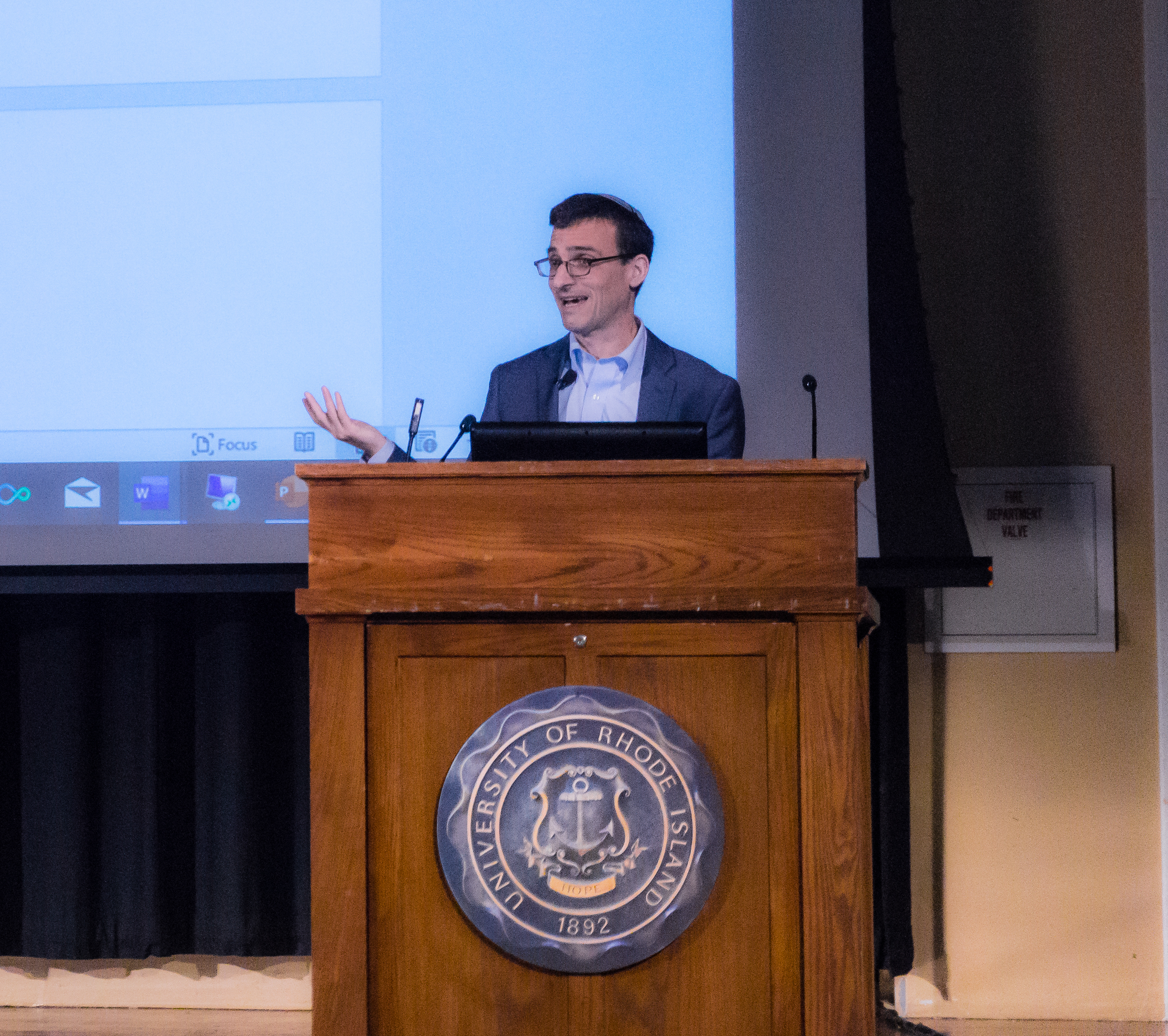A Rabbi from Massachusetts kept the audience entertained with his humor
Rabbi Daniel Judson delivered a speech on Judaism in America on Tuesday in Edwards Auditorium, as the fifth speaker as part of this year’s Honors Colloquium’s series on Religion in America.
Judson is the dean of the Hebrew College Rabbinical School in Newton, Massachusetts. Prior to becoming dean, he was as a Rabbi for 10 years at the Temple of Beth David of the South Shore in Canton, Massachusetts. Judson brought his vast educational background to the University of Rhode Island as well. His doctorate research from Brandeis University focused on the intersection of religion and finance throughout American history.
This lecture, however, was heavily focused on the history of American Judaism through the prism of Rhode Island Judaism from past to present. Using this historic lens, Judson examined trends in rising secularism, intermarriage and tensions regarding Israel.
Right off the bat, Judson’s refreshing sense of humor captivated his audience, a trend he would carry with him throughout the presentation.
“What does it mean when a rabbi takes out his watch to check the time? Absolutely nothing!” Judson said. “If you don’t get that joke, we’re in for a very very long evening.”
Judson opened his lecture by analyzing two poems containing a very similar subject matter. The first poem was written by Henry Wadsworth Longfellow titled “The Jewish Cemetery in Newport,” outlining his visit to an abandoned synagogue in Newport in 1854. Longfellow writes that Judaism as a religion in America was fleeting, declaring it as a “dead nation, never to rise again.”
In contrast, Judson also displayed a poem titled “In the Jewish Synagogue in Newport” written by Emma Lazarus. She is also famous for writing “The New Colossus” inside the Statue of Liberty. Lazarus’s poem was a Midrashic response to Longfellow’s poem, which means she provided her own interpretation of his poem. While a rebuke of Longfellow’s poem, she similarly laments the slow fade-out of American Judaism in the 19th century.
The reason Judson chose to begin his lecture in this manner is to create a historical connection between 19th-century feelings towards the state of Judaism and current Jewish issues.
“When Judaism confronts the essential issues of today, it’s always been here before… the notion that [these are] entirely new problems and that this problem will only lead to the end of the Jewish people is completely mistaken,” Judson said.
For example, the issue of intermarriage, or the idea of marrying someone outside the Jewish faith, is a topic that has persisted in the Jewish community since 1655.
On the issues of Zionism and the need for a Jewish homeland, the topic goes back all the way to 1917 with the passing of the Balfour Declaration, which established support for a Jewish homeland in Palestine. The passing of the Balfour Agreement not only coincided with a rise of antisemitism but also the introduction of a mass movement towards Zionism, according to Judson.
Judson also noted the appointment of Louis Brandeis as the first Jewish Supreme Court Justice as the most seminal moment in American Jewish history. Additionally, Brandeis became a de-facto leader for Zionism, which resonated with the American people.
Because Brandeis was doing it, other people could do it,” Judson said. “Soon enough, Zionism became the central way that Jews in the 20th century expressed their Jewish identity.”
Judson ended the lecture by discussing a story about the Reform synagogue in Providence. The story goes that Rabbi William Braude gave a sermon stating how in the 1930s, refugees came to a sermon wearing kippot, which was considered against the policy in a reform synagogue. When they were told to take off their kippot, Braude cried.
Braude later stated that 30 years later, after wearing a kippah to the Civil Rights march in Selma, he noticed many Jews also wearing kippot participating in the march. Many locals referred to them as “freedom caps.”
Braude later exclaimed that from that point forward, he would wear his kippah in the reform synagogue. At that moment, about 10 other people in the audience put on their kippot. Judson noted that this was funny, as multiple people in the audience kept a kippah in their pockets hoping “this would be the year.”
“What faces the Jewish community are obstacles that are serious in nature… but there is every reason to believe that these obstacles will be overcome,” Judson said. “Jewish history is cyclical, and maybe this is the year.”





